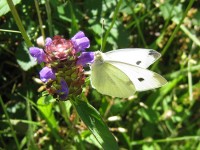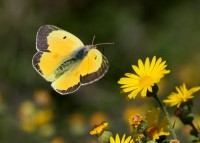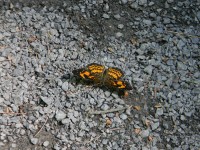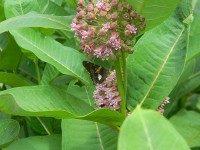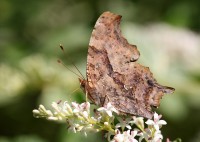With nets over their shoulders, guide books in pockets, and jars for observation in hand, the Shaver’s Creek staff set out to find the butterflies. Every year, groups all over the nation search for butterflies in a national butterfly count that is compiled by the North American Butterfly Association. Shaver’s Creek staff identified and kept count of all the different species found in five different areas. The information is compiled and used to help answer scientists’ questions about butterfly distribution, abundance and conservation.
Butterflies are a beautiful part of summer here at Shaver’s Creek. They can often be seen sunning on the paths, flittering in the meadow and feasting on nectar in our native plants garden. There are a lot of different types – approximately 20,000 species in the whole world! About 725 of those occur in North America.
If you would like to join in some butterfly fun, Shaver’s Creek will be a part of the Wings in the Park festival Saturday July 20th 10AM-2PM at Tudek Park in State College. There will be supplies and demonstrations to make your own net while supplies last! As well, we will be teaching butterfly ID about some of the common Pennsylvania butterflies!
In case you can’t attend, below are 14 of the most common central Pennsylvania butterflies – all were seen on during the count! Check out the pictures, descriptions and facts to see if you can identify one the next time you’re near a flittering fellow!
Photo Credits:
Jerod Skebo — Eastern Tailed-Blue, Great Spangled Fritilary, Pearl Crescent, Red-Spotted Purple, Silver Spotted Skipper
Ken Slade — Eastern Tiger Swallowtail, Orange Sulfur, Question Mark (Creative Commons)
John Flannery — American Snout, Viceroy (Creative Commons)
Michael Head — Baltimore Checkerspot (Creative Commons)
John Tan — Cabbage White (Creative Commons)
Johinda Dockens — Eastern Comma (Creative Commons)
Jill Hannelly — Monarch

